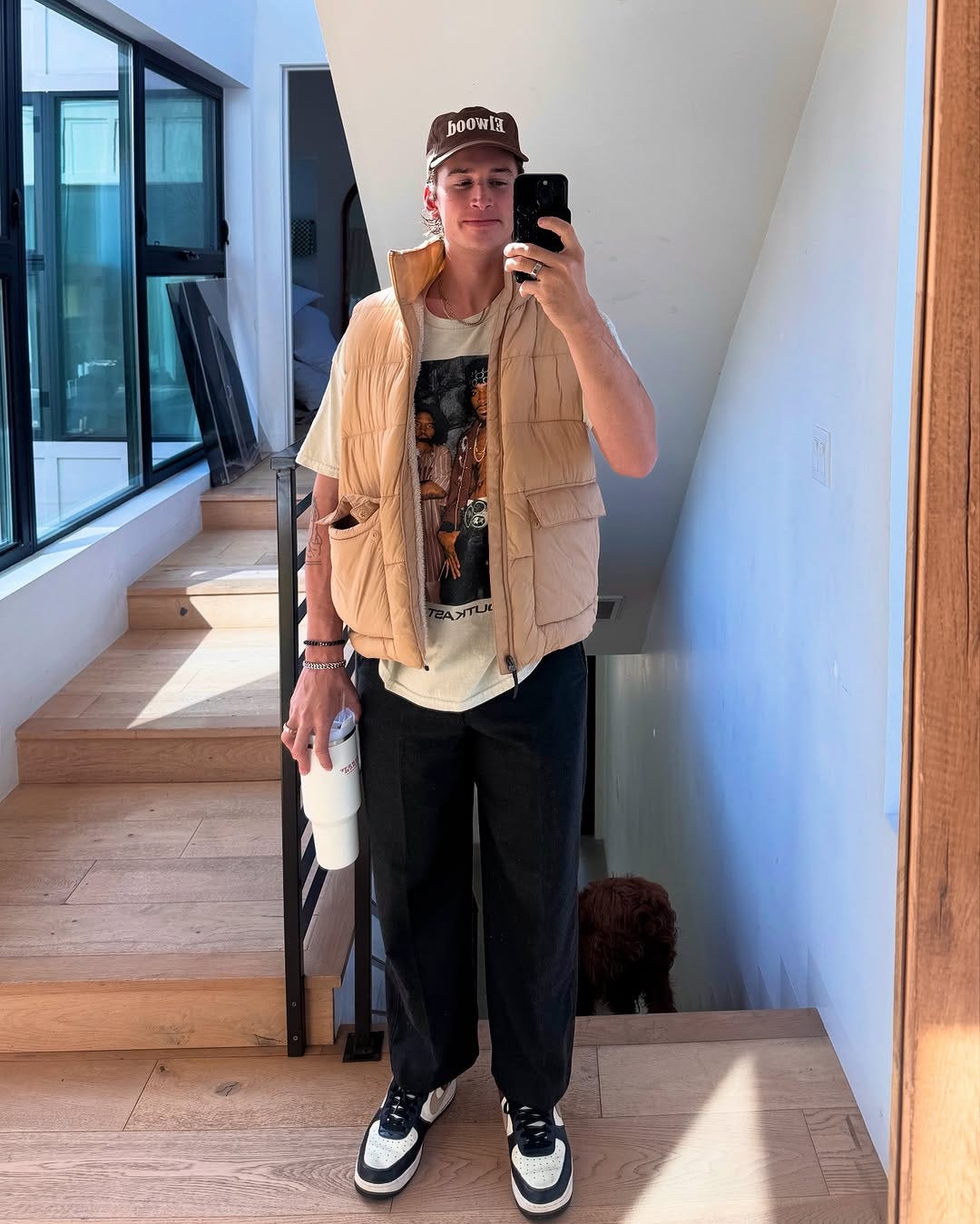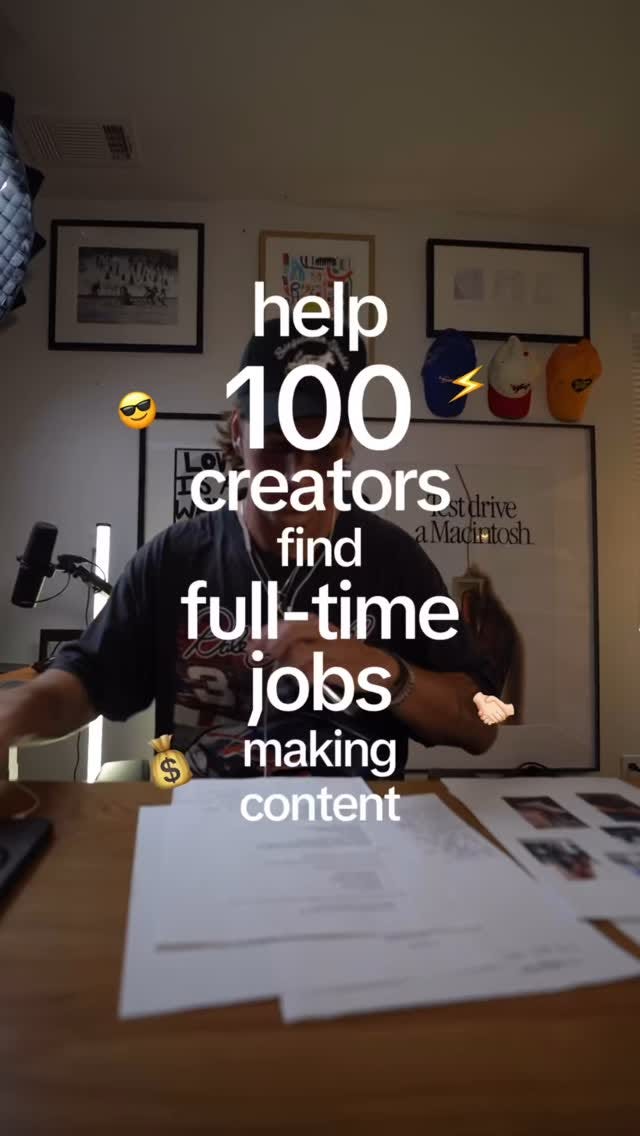Welcome to “Creator Conversations,” a weekly feature on Paid Partnership where I interview a prominent creator, agent, marketer or industry professional to discuss wide-ranging topics from outreach to negotiation to content.
In today’s digital landscape, there’s so much conversation around “athletes as the next creators” - How teams/leagues/brands can educate and assist their talent into building personal brands on social media to extend their reach and story beyond the field/court/ice/etc.
While some top athletes display a mastery (we see you Jared McCain) during their peak playing years, others find a passion for content once their playing days are finished.
Hello, JT Barnett.
After wrapping up his hockey career, JT pursued a path of content creation which has not only led him to become an incredibly insightful resource on social for creators across the globe but also build an entire company that helps brands find and hire creators on a full-time, in-house basis.
This mission to staff brands with dedicated creators is such a savvy and successful approach in 2025, a true win-win for all parties involved.
JT picked up my call on short notice to chat through:
Why brands should hire in-house creators
The importance of sharing your work on personal social media
Creator power couples
And more!
Neil: Starting off with your current company, Creator X. Can you set the stage and explain exactly what service you're providing for brands?
JT: My philosophy is that every brand should operate like a media company and create content the way top creators do. To make that happen, you need people on your team who truly understand how to create like a creator. But finding those people—and knowing how to work with them—is tough.
That’s where we come in. We act as the bridge. We recruit creators for brands and build out their social teams. That could include a social media manager, an in-house content creator who serves as the face of the brand, or a videographer capturing the founders and team in action—whoever the brand needs to drive its social presence.
Beyond hiring, we also provide strategy. That might be developing a content series—literally mapping out what your brand should be filming—or understanding consumer content habits. What is your customer watching? Who are their favorite creators? How do they show up on social?
We use those insights to build a blueprint for the media side of the brand, helping them become great at making content.
Neil: So the big difference there is that brands are hiring creators more or less full-time, in-house versus just collaborating with creators on a one-off partnership, right?
JT: Yeah, the goal of what we're trying to help brands find is to build long-term, owned channels. We're not an influencer marketing platform where creators are posting on their account to their audience getting paid for one-off deals. It's more trying to build a brand’s own production team.
Neil: How are brands best utilizing these creators? Any major success stories?
JT: One of the best ways to utilize creators is having them host specific shows—similar to the “man-on-the-street” style, but not necessarily in that exact format.
The way I look at it is this: if you know your audience is watching Subway Takes, and you know your core audience is, say, moms aged 35 to 40 living in New York, then there’s an opportunity. Why not create your own version of Subway Takes—produced by your brand—with a creator who represents that demographic as the host? And it lives on your brand’s account.
We’re doing exactly that right now with a mom-focused company. The show is called Bad Moms, Good Advice. It’s essentially Subway Takes through the brand’s lens.
This model works because creators today are also looking for career paths rooted in content creation. Influencer brand deals can be inconsistent—some great months, then some quiet ones. But if a creator can split their time between traditional influencer work and being part of a brand’s internal content team, they now have two sustainable income streams. They can actually make a living solely by creating content—and that’s the goal we’re working toward.
Neil: I love that from the creator perspective - having a steady paycheck and opportunity to play in a sandbox and grow alongside the brand. From the brand side, what should they know before hiring a creator full-time, in-house?
JT: First, they need to understand their consumer better than they currently do.
Algorithms today are so specific that you could have ten people in the same industry, and each one would have a completely different For You page. That’s how tailored content is to individual habits—and that’s the level of specificity brands need when creating content.
Traditional marketing teaches you to understand human psychology, but it often gets simplified to broad personas—like "moms aged 25 to 40." Social media doesn’t work like that. It demands a granular understanding: what exactly is your customer watching? Who are their favorite creators? What platforms, formats, and posting times are they engaging with? What are they sharing with friends, saving, or commenting on?
That becomes your blueprint—not just for content strategy, but for hiring. Do you even need to hire a creator? If so, what kind? What platform should they be focused on? Should they host a podcast, a YouTube series, or short-form street interviews? Or does your audience not care about that format at all?
The more dialed in you are on your consumer, the better your chances of making content that actually resonates.
Neil: Do you find that brands are searching for creators that are already making content in their space, or is it more “JT is a host, and I like his content. Let's morph him to mom content” ?
JT: We look for creators whose skill sets overlap with the content style a brand wants to produce. Their own account is essentially their resume. Just like a CFO needs a track record with numbers, a creator applying to host a long-form show needs to show they’ve done it before—especially if a brand is about to pay them $6,000 to $10,000 a month.
That’s where we come in: helping brands go more upstream than typical user-generated content. UGC has a low barrier to entry—anyone with a phone can make an unboxing video or share a product experience. We're focused on creators who’ve already built and performed with the kind of content a brand wants to produce—people with real experience, existing viewership, and traction in the style you're looking to replicate, just now under the brand’s umbrella.
Neil: Speaking of the digital resume, you've had quite an unreal journey from hockey to content creator/entrepreneur. Curious as to your perspective on how your personal social media has opened more doors, both personally and professionally.
JT: It’s the number one thing that’s opened doors for me—by far. I even posted on Instagram the other day that if I could structure my day any way I wanted, I’d spend 9 a.m. to 9 p.m. just making and sharing content.
I don’t think there’s anything more powerful you can do personally to accelerate your growth. Content is a direct spotlight on your work—it lets people see what you're about, connect with it, and pull you into new opportunities. That’s how I’ve approached it, and it’s led to so many things I wouldn’t have had otherwise.
Neil: Any advice for someone that might be hesitant to start?
JT: I think a lot of people get held back by worrying what others think—whether it’s imposter syndrome or just feeling like they shouldn’t be putting themselves out there. That was real for me, too.
You get it—coming from the NHL world, hockey is a more conservative culture. When I was playing, I caught a lot of heat for posting on Instagram. But I believed in what I was doing and where it could take me, and that’s what kept me going.
So my advice is: can you tune everything out and just post what you believe in? Because it only takes one piece of content to change your life overnight. If you truly believe in yourself and what you’re building, there’s no faster way to get others to resonate with it. That’s literally how these algorithms work—they’re designed to connect your content with the people who’ll care about it. Use it that way. It can change everything.
Neil: Alright, two more fun ones to get you out of here. First, your wife, Sami Clarke, is an incredible, successful creator and entrepreneur in her own right (power couple alert). Do you two just eat dinner and talk about content all day? Or is it like you're a pro chef and you come home and you eat ramen?
JT: It’s been really fun doing this alongside her. We don’t work at the same company, so there’s always been a boundary—we’re not directly involved in each other’s work. That actually makes it more exciting. We get to observe and learn from each other without being in each other’s day-to-day.
She’s incredible at what she does. It’s so natural to her, and it’s inspiring to watch her operate in her own lane. I learn a lot just by seeing how she moves.
At home, we have fun talking about work, but there’s a healthy separation. A good way to describe it is—our work is like our sport. I go to the rink, play my game, and come home to my family. That’s how I view my business. It’s the same for her. We love what we do—it’s our game, our craft—but when we’re home, we’re just living our lives, doing the family thing.
Yeah, we still talk about work, give each other feedback, and bounce ideas around, but we’re not sitting around acting like business partners. We’re just two people who love what we do and support each other in it.
Neil: Last one, I know you got into fashion a bit more recently. Any brands you're rocking with currently?
JT: I like fashion, but I’m definitely not on the cutting edge of trends. I’d say I’m more of a second-wave adopter [laughter].
I’ve been wearing Elwood for five or six years now—probably 80% of my closet is Elwood. Another brand I wear a lot, especially since moving to New York, is Siegelman Stable.
I’m just not trendy enough to rock the really forward stuff. I usually wait until something’s a bit more established. But yeah—those two brands are my go-tos.







